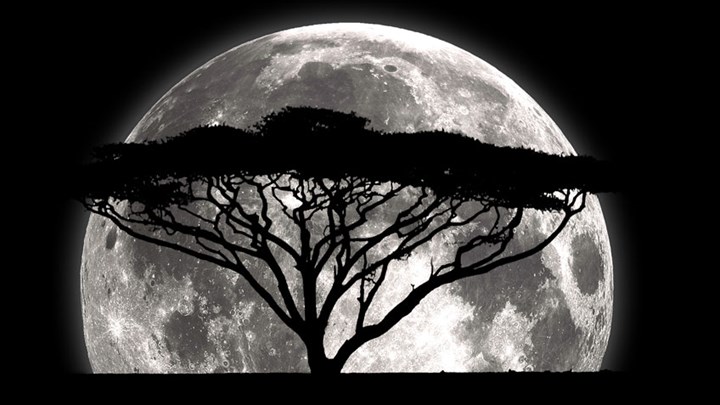
by Joe Coogan - Tuesday, July 23, 2019

Editor’s Note: As America marks the 50th anniversary of Apollo 11 landing on the moon, the author adds an interesting footnote by sharing his memory of the moment. On safari in Kenya at the time, he and his father explained how astronauts Neil Armstrong and Buzz Aldrin were taking mankind’s first steps on the moon more than a quarter-million miles from Earth—planting the American flag and reporting back to President Richard Nixon—giving new meaning to hunting and exploring a new frontier. Commemorating the historic feat, the two-hour-and-24-minute NASA videotapes of the landing just sold on auction for $1,820,000. NASA intern Gary George previously paid $217.77 for three tapes of the Apollo moon walk in a government surplus auction in 1976.
Fifty years ago we had no TV to watch the lunar landing. We were camped under flat-topped acacia trees in a remote stretch of trackless, game-filled Kenyan wilderness around 100 miles from the coast and about a two-hour trek north of the Tanzania border. My father and I were seven days into a 14-day self-guided safari accompanied by a native crew of four—Kiribai and Dana were ace trackers while Bandu and Bashora made up our camp crew. That evening, we enjoyed grilled gazelle chops and pulled our chairs a little closer to a warm, crackling campfire and listened to lions roaring not far away. We looked skyward at a crescent moon glowing bright against a black velvet star-studded sky and tried to envision what might be occurring up there.
Four days earlier, Apollo 11 had been launched from Cape Canaveral and now the lunar module, Eagle, was easing itself down on the moon somewhere in an area called the Sea of Tranquility. Pointing at the quarter slice of waxing moon overhead, my father attempted to explain all of this to our Kenyan companions in broken Swahili and halting English. We tried to describe for them, without sounding silly, how two American astronauts would soon step foot on the moon, making a historic “giant leap for mankind.”
The Kenyans were incredulous at the thought that men might actually walk around up there while we watched from the African bush far below and, frankly, so were we. But we continued our attempt to explain the unexplainable and convince the inconvincible with a mix of their language and ours. They clicked their tongues and shook their heads in disbelief and, I’m sure, thought we’d lost our minds by claiming a man would walk on the moon.
The moon walk was confirmed the next morning via the BBC World Report broadcast received on our wireless short-wave radio. It was a momentous occasion for which we felt very proud and the crew, influenced by our celebratory mood, offered their congrats in Swahili—“Hongera sana!”—with firm, heartfelt handshakes, even though, I’m sure, they still had their doubts.
Then we went hunting.
About the Author: Joe Coogan spent his younger years living in Kenya, East Africa, with his family during the 1960s and 1970s. As an avid hunter, shooter and outdoorsman, his early Kenya experience prepared him for safari work for many years as a professional hunter (PH) in Botswana and Tanzania. In 1972, Coogan earned a degree in journalism from the University of South Florida, returning to Africa to work for the renowned safari firm Ker, Downey & Selby (KDS) Safaris. He joined its Botswana operation under the leadership of the renowned Harry Selby and earned his PH license under Selby’s guidance. Coogan conducted hunting safaris in Botswana for KDS Safaris and Safari South for the next 20 years. In 1991, he joined the editorial staff of Petersen’s Hunting, relocating to Los Angeles. In 2001, following a three-year stint in Arkansas managing a wildlife project, he returned to Africa when he joined Arusha-based Tanzania Game Tracker Safaris (TGTS), conducting hunting and photographic safaris in Tanzania for the next five years. In 2006, Coogan joined Benelli USA as its brand marketing manager, hosting its popular "Benelli On Assignment" outdoor TV show for six years. Today, he is a field editor for the NRA’s American Hunter and travels between his home state of Florida and Botswana, arranging and conducting safaris throughout Africa.
Follow NRA Hunters' Leadership Forum on Twitter @HuntersLead.
E-mail your comments/questions about this site to:
[email protected]
Proudly supported by The NRA Foundation and Friends of NRA fundraising.
